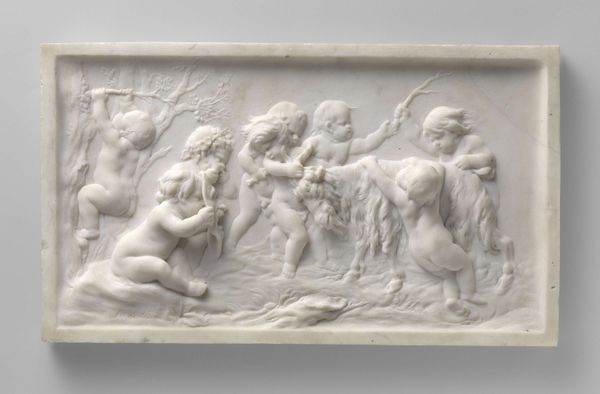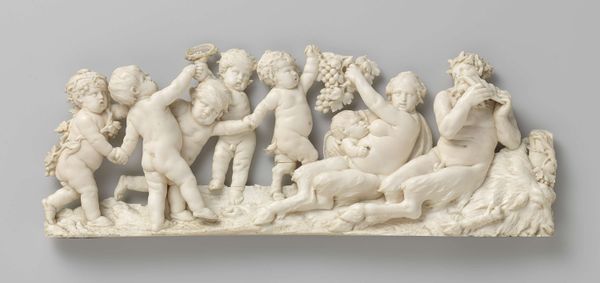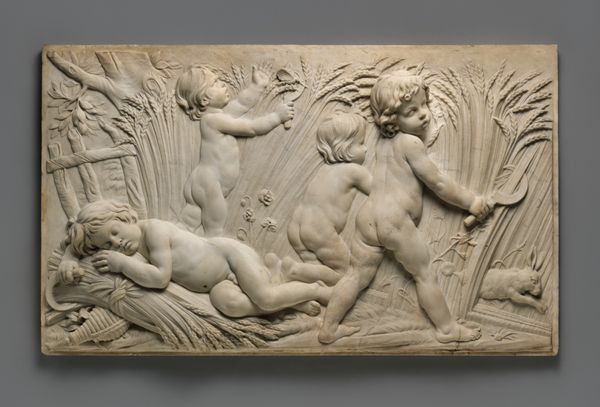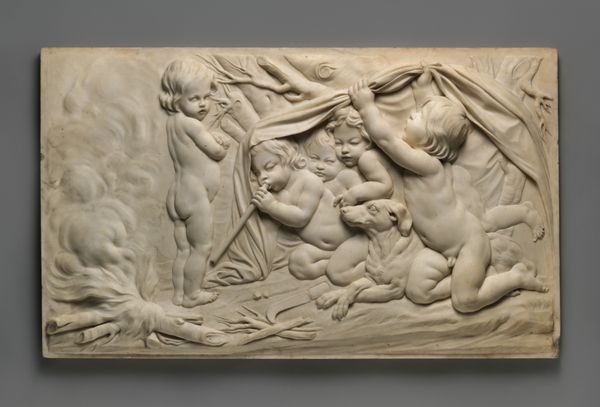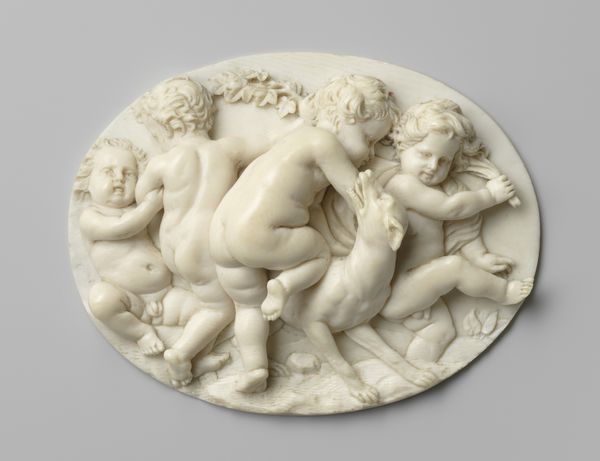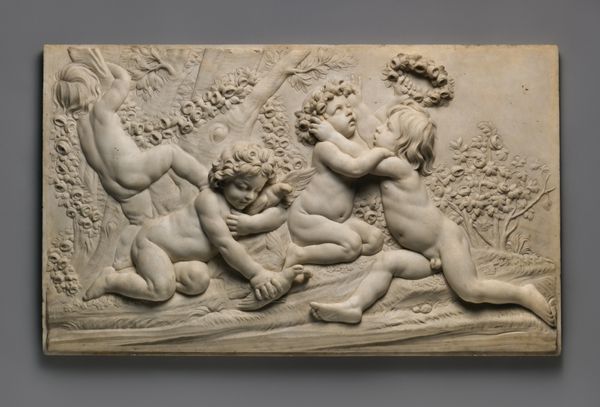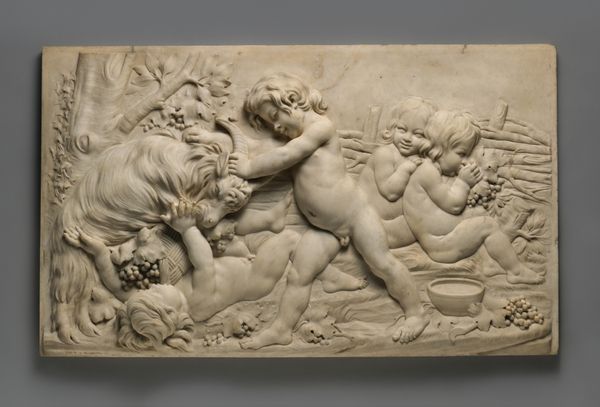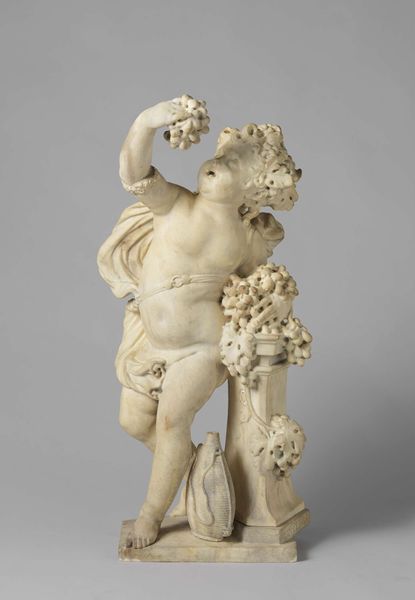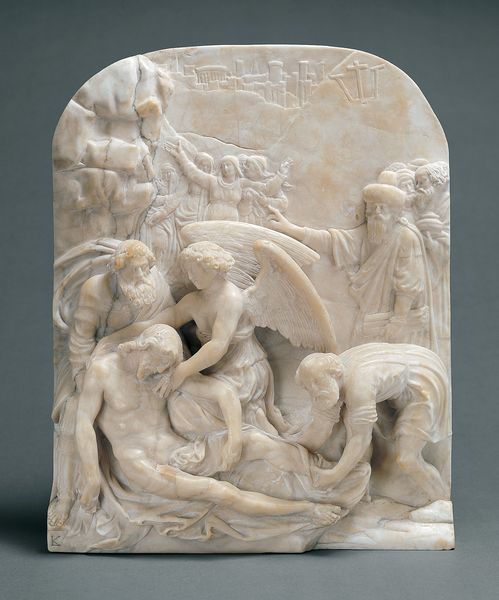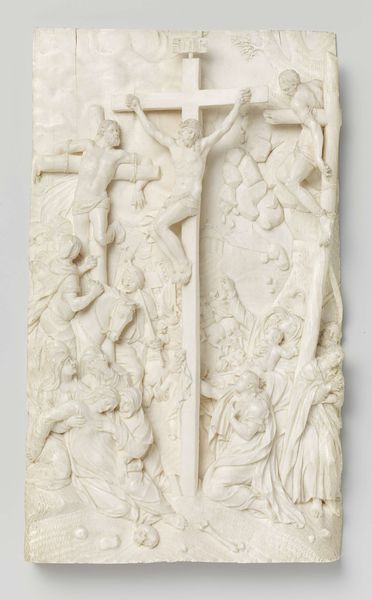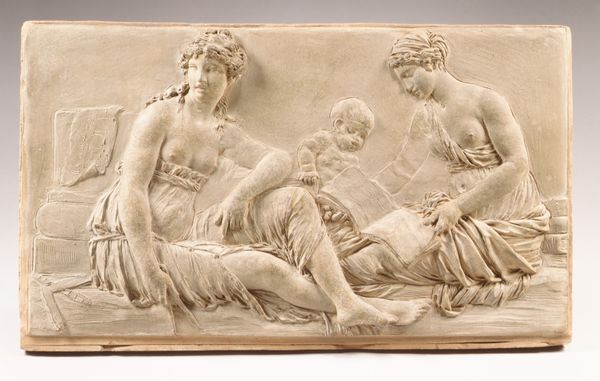
Seashell Boat with Infant Sea Nymphs Drawn by a Hippocamp and Dolphins c. 1657
0:00
0:00
#
natural stone pattern
#
natural shape and form
#
sculpture
#
sculptural image
#
possibly oil pastel
#
hand-embroidered
#
underpainting
#
watercolour bleed
#
layered pattern
#
watercolor
Dimensions: height 10.8 cm, width 30.8 cm
Copyright: Rijks Museum: Open Domain
This is a 16th-century relief carving, thought to be made in the Netherlands, out of a single piece of walrus ivory. Notice how the Meester van de Sebastiaansmartyriën, or Master of the Martyrdom of Saint Sebastian, has taken full advantage of the material. Ivory is dense, strong, and fine-grained, which allows for intricate details. It also has a natural warmth that comes alive under light. To carve it, the artist would have used specialized tools like chisels, gouges, and gravers, carefully removing material to reveal the scene. The subject matter is classical and allegorical, but the material speaks to trade routes and global resources. Ivory was a luxury commodity, connecting Europe to the Arctic, and the artist’s virtuosity made it all the more valuable. When you look at art, it’s easy to get caught up in the image. But considering the material and the making helps us to appreciate the social context, and the immense labor involved in the production process.
Comments
rijksmuseum about 2 years ago
⋮
The identity of one of the most important ivory carvers in the 17th century is unknown, so he is named after his masterpieces, two reliefs dedicated to St Sebastian. In this small, humorous scene, his virtuoso style, technique and feeling for anecdotal detail finds full expression in the putti’s contorted faces, their ‘spaghetti’ hair blowing in the wind and their soft, plump bodies.
Join the conversation
Join millions of artists and users on Artera today and experience the ultimate creative platform.
